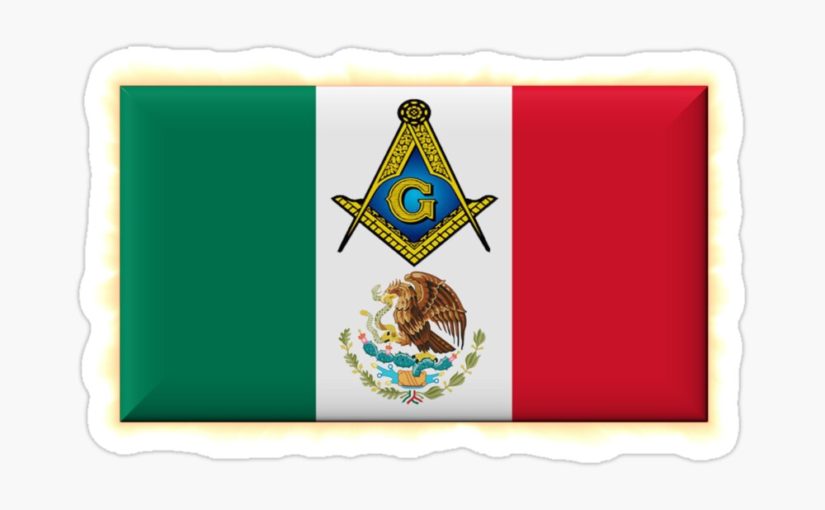From its very beginning Masonry has had in its ranks true agents of socio-political change and Freemasons who have distinguished themselves in the Liberal Arts and Science around the world. All those excellent men embraced the sacred ideals of Liberty, Equality and Fraternity and took part in the civil struggles of all five Continents. The list includes: Cromwell, Locke and Hobbes in England; Grotius and Spinosa in Holland; Voltaire, Diderot, Rousseau, Montesquieu and Robespierre in France. George Washington in the United States, Hidalgo in Mexico, Bolívar, San Martín and Francisco de Miranda in South America.
Prominent in the history of Mexico are four major phases , all of them characterized by traces of nationalism. They are:
- the quest for a national identity
- the laying aside of Mexico’s racial differences
- the acknowledgment of its own heritage
- the defense of Mexican integrity and identity from foreign political, cultural and economic aggression.
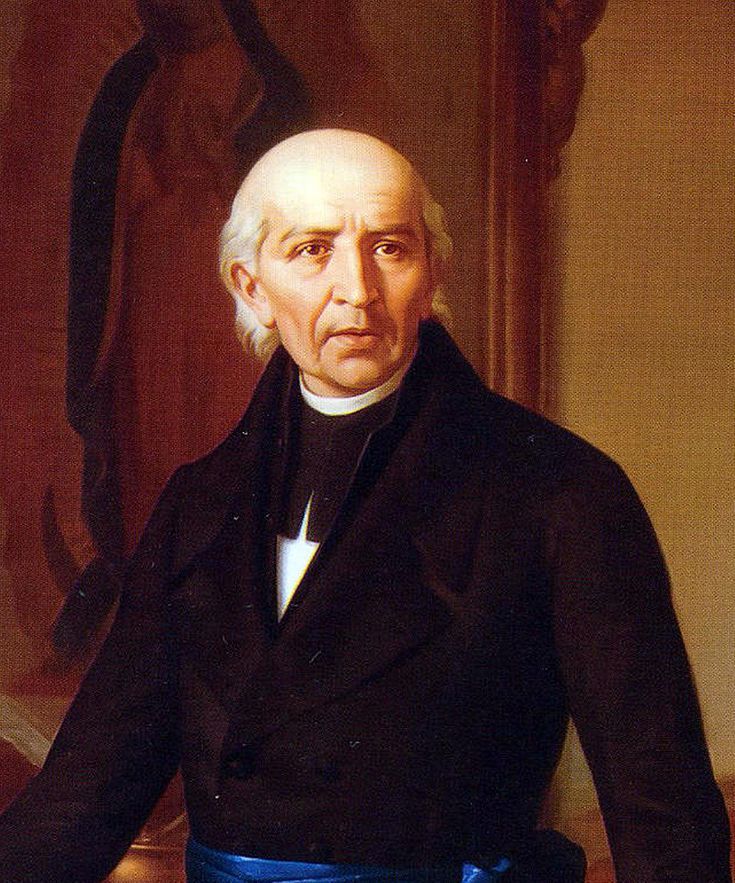
Each of these phases had its own interpreter, whose name alone suffices to describe each Era in the history of Mexico in which he operated. They are:
- Miguel Hidalgo [1], a Freemason and the father of Mexico’s Independence
- Benito Juárez [2], a Freemason and former President who gave Mexico constitutional reforms
- Francisco Madero [3], a Freemason who led the Mexican Revolution.
- Lázaro Cárdenas [4], a Freemason who led Mexico to economic autonomy after the revolution
Freemasonry has shown the world that the men it shapes in the silence of its Lodges, know how to achieve and defend the civil rights and liberty of people. At the same time, Masonry has also proven to be an Institution that, when needed, can act with great prudence. One of the obligations to which a Freemason swears is that of respecting the legality of an established Government. Masonry however does not make cowards, but neither does it form inconsiderate people.
“Thinking without acting is sterile, but acting without thinking is reckless.”
Filled with courage and a sincere desire for enlightenment , the brothers Mateos and Cayetano Rinaldi, amongst other Freemasons, in a meeting that took place on the 14th of August 1825, put forward the plan to establish a new Masonic Rite. They did so inspired by the conviction that Masonry should preserve its purity and the Order should be one throughout the globe and should share a common background of moral, political, domestic and civil values.
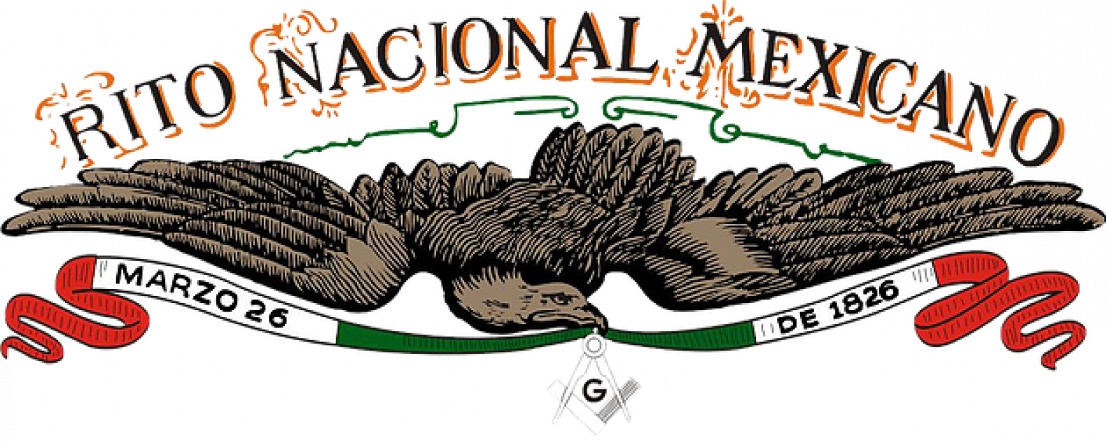 On August 22, 1825, in eastern Mexico, the Brothers Guillermo Gardet, José María Mateos, Guillermo Lamont, Luis Luelmo y Goyanes, Cayetano Rinaldi, Carlos Rinaldi, Juan María Mateos, Francisco Ocampo and Mariano Rodríguez met as part of a Commission instituted to discuss and decide on the Masonic regulations for Mexico.
On August 22, 1825, in eastern Mexico, the Brothers Guillermo Gardet, José María Mateos, Guillermo Lamont, Luis Luelmo y Goyanes, Cayetano Rinaldi, Carlos Rinaldi, Juan María Mateos, Francisco Ocampo and Mariano Rodríguez met as part of a Commission instituted to discuss and decide on the Masonic regulations for Mexico.
They agreed that:
1. The Mexican National Rite was to be set up in Law; that the founding members were to be regular masons of accepted rites; that the Mexican National Rite should be autonomous of any other in the world , as is the Mexican nation independent of the other powers. 2. A Supreme Great Orient [5] and Great Mexican National Lodge should govern the Mexican National Rite , and should any meeting that worked this Rite not be legally authorized, it would be regarded unlawful. 3. The symbolic degrees would be the same in number, as it is in all the established Rites and universal Freemasonry, that is to say: Apprentice, Fellow or Companion and Master, plus six upper degrees that would cast the Rite’s General Regulation. 4. In any city of Mexico, even if not a Province Capital, where there are five regularly constituted Lodges, a Grand Lodge could be installed. However, there cannot be more than one Grand Lodge in each Province. 5. Mexican Freemasonry would have no purpose other than arousing in everybody the purest sentiments and the practice of all virtues, and therefore work towards teaching man how to respect and love that which virtue and wisdom consecrate to humanity as timeless principles. Mexican Freemasonry would also establish the symbolic mysteries i.e. the ties that unite the members of the Grand Family which come by meeting always under the auspices of harmony and true brotherhood.
But after its formation, the Mexican National Rite clashed with the prejudices of the society of the day that branded it irregular. Its raison d’etre was challenged by having nine degrees. Did those who objected forget that vanity was the guide to the creation of the high degrees of Scottish Freemasonry and that only the Masonic Authorities’s tolerance allowed its recognition ? To overcome arguments and objections like these, the Mexican National Rite was established in Law.
Those five Articles mentioned earlier make up the solemn declaration of the Mexican National Rite. They represent the ancient Landmarks, the essential principles of Freemasonry as regulated by the English James Anderson’s [6] Constitutions issued at the request of the lodges that formed the Grand Lodge of England. They also sum up the essence, mark the direction and define the philosophical ideological distinction of what we call Scottish Freemasonry.
They also sum up the essence, mark the direction and define the philosophical ideological distinction of what we call Scottish Freemasonry.
After its foundation, the Mexican National Rite went on to set out its own Constitutions which proclaimed the sovereignty of the Mexican Rite and defined its nine degrees:
- Apprentice (Aprendiz)
- Fellowcraft (Compañero)
- Master (Maestro)
- Approved Master (Maestro Aprobado)
- Knight of the Secret (Caballero Secreto)
- Knight of the Mexican Eagle (Caballero del Águila Mexicana)
- Perfect Artificier (Perfecto Artífice)
- Grand Judge (Gran Juez)
- Grand Inspector General of the Order (Gran Inspector General de la Orden)
On 26th March 1826, the first National Mexican Grand Lodge, named “La Luz”, was installed.
At the General Congress held in 1833, the Mexican National Rite brought in a set of reforms, which included the acceptance of women in Freemasonry based on the principle that it was imperative to form the character of all Mexican citizens regardless of their sex. Other reasons for setting up the reforms were:
- The struggle to abolish military and clerical privileges
- The secularization of society through the separation of the Church from the State.
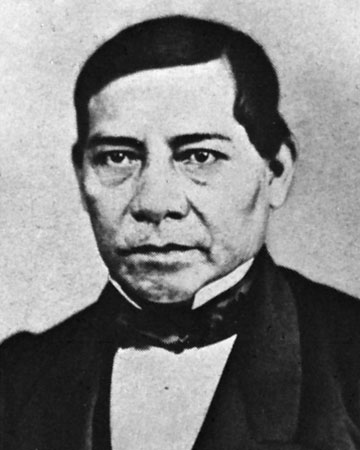
Thanks to the enlightened President Benito Juárez, a modern political Constitution was passed in 1857, which brought to an end the power of the Roman Catholic Church in Mexico. That reform, however, caused an uprising and started a civil war known as the “War of the Reforms” which ended in a triumph for the liberal forces over the conservatives. In 1861, the implementation of the reformed laws secured a divorce between the Church and the State, which in consequence reclaimed all the former’s possessions, allowed freedom of worship and introduced civil marriage.
All along , the conservative forces were pursuing an attempt to bring into the country a ruler that would reinstate their cherished traditional political model. The opportunity presented itself when France, Spain and Great Britain in an attempt to recover the national debt that the near bankrupt Mexico had accrued during the internal civil war, sent punitive expeditions in the winter of 1861. The Spanish and English left the following year but France had other plans as it intended to expand its influence in Central America. In the pursue of such objective and after some long negotiations, on 10th June 1864 France installed the ambitious Hapsburg ArchDuke Maximillian [7] as head of State with the title of Emperor of Mexico . After that event the Mexican National Rite formally lowered its columns.
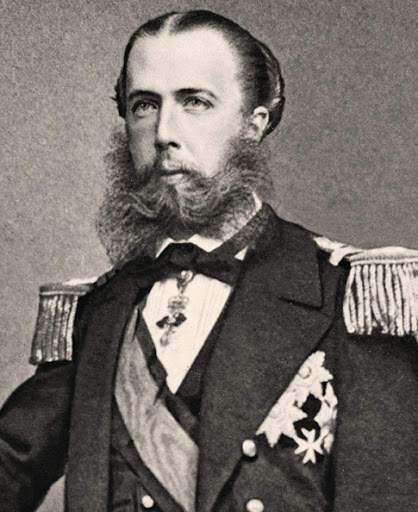
In 1916 the Mexican National Rite fought an ideological war against Venustiano Carranza [8], the then president of the Mexican Republic. The members of Parliament who were also Freemasons and were led by Francisco J. Mújica [9] , defeated the Carrancistas conservative proposed articles 3, 27, 123, 130, etc. of the Constitution and redrafted them in the workshops of the Mexican National Rite. We can thus proudly state that the Mexico Constitution of 1917 was an expression of the Masonic ideals !
It is evident from history that Freemasonry influenced the intellectual, political and civil life of many countries on earth. Personally, I see Freemasonry as the pathway to fulfillment and the means for creating a society where men of good costumes concentrate all their efforts on community service, man’s welfare and regard for customs and traditions.
Translated and adapted by Aldo Reno from : Masoneria y el Benemerito Rito Nacional Mexicano, by Víctor Hugo Téllez Ramírez
If you wish to know more about the History of Freemasonry in Mexico , then I suggest you click here and will be redirected to the very interesting paper written by Brother Peter Ingram of the United Masters Lodge No. 167.
Bibliography:
- Historia de las Sociedades Secretas de Ramiro A. Calle
- Rodolfo Gallardo Rosales Gran Luminar y Gran Maestro de la Orden ritonacionalmexicano.org
[1] Don Miguel Hidalgo y Costilla or Miguel Hidalgo – Born 8 May 1753,Corralejo de Hidalgo, Mexico, Died 30 July 1811,Chihuahua, Mexico. Was a Spanish Catholic priest, a leader of the Mexican War of Independence, and recognized as the Father of the Nation.
[2] Benito Pablo Juárez García 21 March 1806, San Pablo Guelatao, Mexico, Died 18 July 1872, National Palace, Mexico City, Mexico. Was a Mexican lawyer and politician, who served as the 26th president from 1858 until his death in 1872. He was the first president of Mexico who was of indigenous origin.
[3] Francisco Ignacio Madero González, Born 30 October 1873, Parras de la Fuente, Mexico, Died 22 February 1913,Mexico City, Mexico. Was a Mexican revolutionary, writer and statesman who served as the 33rd president of Mexico from 1911 until shortly before his assassination in 1913.
[4] Lázaro Cárdenas del Río – Born 21 May 1895, Michoacan, Mexico. Died 19 October 1970, Mexico City, Mexico. Was a general in the Constitutionalist Army during the Mexican Revolution and a statesman who served as President of Mexico between 1934 and 1940. He is best known for nationalization of the oil industry in 1938 .
[5] The three Craft Degrees are controlled by a Grand Orient which is similar to a Grand Lodge except that it is ruled by a self-perpetuating Council, the ordinary Mason having no say in the government of the Craft. (ref. Early Mexican Freemasonry: A confused chapter in our history, by Bro. Peter Ingram, “The Skirret”)
[6] Dr James Anderson – Born 1679,Aberdeen – Died : 28 May 1739, London. Grand Warden of the Grand Lodge of London and Westminster. He was commissioned in September 1721 by the Grand Lodge to write a history of the Free-Masons, and it was published in 1723 as The Constitutions of the Free-Masons.
[7] Maximillian I Emperor of Mexico (Fernando Maximiliano José María de Habsburgo-Lorena ,Born 6 July 1832 Vienna – Died 19 June 1867 Santiago de Queretaro, Mexico) and a younger brother of Emperor Franz Joseph I of Austria,
[8] José Venustiano Carranza De La Garza – Born 29 December 1859, Cuatrocienegas Municipality, Mexico , Died 21 May 1920, Tlaxcalantongo. He was one of the main leaders of the Mexican Revolution, whose victorious northern revolutionary Constitutionalist Army defeated the counter-revolutionary regime of Victoriano Huerta and then defeated fellow revolutionaries after Huerta’s ouster
[9] Francisco José Múgica Velázquez – Born 3 September 1884, Tingüindín, Mexico – Died 12 April 1954, Mexico City, Mexico. He was a military revolutionary, Major General and Mexican politician. He participated in the Constituent Congress of 1917 that produced the Constitution of Mexico.
- His Majesty’s Servant , David Garrick Esq – Freemason ? - June 7, 2024
- Influencia de la Masonería en Chile - April 29, 2024
- Pomegranate in Freemasonry – its significance - March 11, 2024

